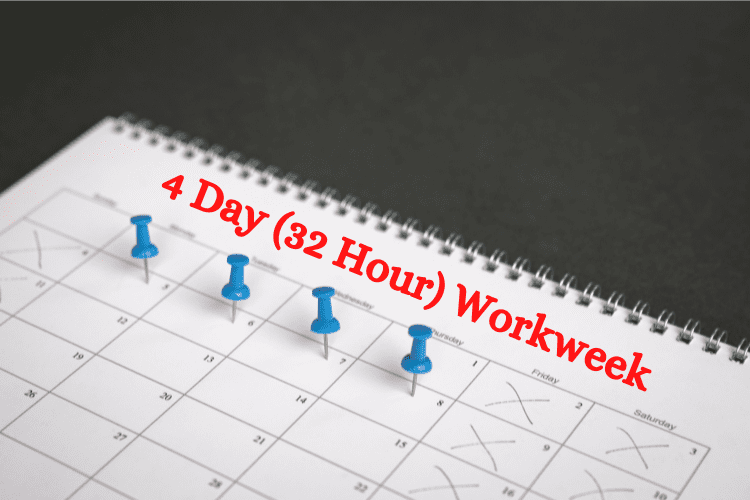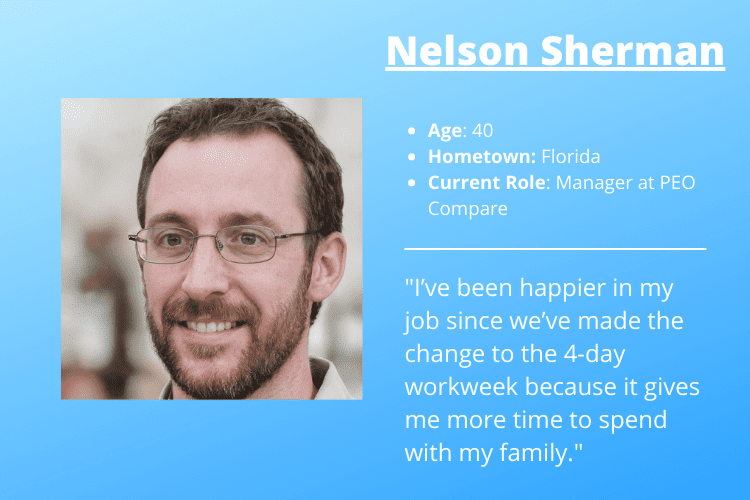The Four-Day, 32-Hour Workweek: Why This Trend Is Taking Hold

The COVID-19 pandemic has reshaped the way people around the world work. All of a sudden, life transitioned from in-person to staying at home. The result? The rapid adoption of communication tools such as Slack and Zoom to keep workforces connected and running efficiently. It also meant that many people were working longer hours.
Consequently, another new phenomenon has emerged from this pandemic: the introduction of a four-day workweek. People learned to work more efficiently at home, and in turn, many people had worked more hours per week in the last two years than when they ever worked in person. Now, there’s a trending movement to create a shorter workweek to retain talent and ease the effects of burnout. The idea is to create a standard four-day workweek in the U.S. Let’s explore more about this new trend and how it’s taking shape.
What is a Four-Day Workweek?
A four-day workweek is pretty much just as it sounds: the standard workweek for full-time employees would be shortened from a five day, 40 hour per week schedule to a four-day, 32 hours per week schedule. This initiative aims to increase productivity to four days per week so that the fifth day is a day off to relax and recharge. This movement first started in European countries like Belgium, where “full-time” workers now have the right to ask for a four-day, 32 hour week.
In the U.S., California introduced Assembly Bill 2932 in February 2022, a new bill proposed by California Assembly Members, Evan Low (D-CA) and Cristina Garcia (D-CA), which would amend Section 510 of the California Labor Code. What does this mean for full-time employees in the state? It means the workweek would change from the standard five day, 40 hour workweek to a four-day, 32 hour workweek for companies with more than 500 employees!
Additionally, on the national level, Rep. Mark Takano (D-CA), a member of the Congressional Progressive Caucus, introduced the Thirty-Two Workweek Act to Congress in July 2021. The measure seeks to implement a standard 32 hour workweek nationally. The bill would not eliminate 40 hour workweeks but would require employers to offer their employees overtime pay after 32 hours per week.
“After a nearly two-year-long pandemic that forced millions of people to explore remote work options, it’s safe to say that we can’t – and shouldn’t – simply go back to normal because normal wasn’t working,” Takano added.
For now, the bill has only been introduced to Congress and has not passed through either the House of Representatives or the Senate. Although, the bill has gained universal support from the nearly 100 member progressive caucus and will likely get more attention soon. The way the world works has changed for the “9 to 5” employee and this is a progressive initiative that would benefit millions of people.
Why Is A Four-Day Workweek Trending?
Here are the top reasons why a four-day workweek is trending:
- Burnout: Job burnout after two years of fully remote or hybrid schedules in which people worked more than 40 hours per week.
- Improved Mental Health: More time to rest, recharge, pursue hobbies, and reconnect with family and friends.
- A Good Work-Life Balance: A new appreciation and demand by the workforce for a better work-life balance, with more time away from work and more time spent on personal pursuits.
According to Himalayas, a platform to find remote work, 109 U.S. companies have already adopted a four-day workweek, either permanently, seasonally, or as a trial. Companies that put their employees’ well-being first are leading the charge!
Now, let’s hear from a few individuals who’ve transitioned to a four-day workweek:
John Hart

Meet John Hart, a 52-year-old from Hood River, Oregon and Co-Founder & CEO of Falcon River, a company that aims to provide the best-in-class deal flow service that connects qualified buyers and sellers. He decided to transition his business to a four-day workweek and he recommends everyone try it!
He executed a four-day workweek to guarantee a ”balance between work and fun activities for employees,” while paying little attention to the industry standard five day workweek.
“Every one of these approaches and changes is an indication of expanding interest in tracking down better approaches to work that give expanded advantages to workers.”
He found out that employees are more engaged and productive when given a chance to rest and
unwind sufficiently. He says his employees are less worn out from long working hours and
are more effective in their positions.
If a CEO supports the four-day workweek and has already seen positive results, this is undoubtedly a great sign!
Nelson Sherman

Meet Nelson Sherman, a 40-year-old from Florida who thinks “four days is better than five.” He is the Manager at PEO Compare, a company that strives to offer the most comprehensive tools and resources available for businesses looking to outsource their HR to a professional employer organization. The company decided to transition from a five day, 40 hour per week schedule to a four-day, 32 hour per week schedule at the beginning of 2022.
Since then, Nelson is happier in his job because the change gives him more time to spend with his family. In addition, he’s been able to achieve a healthier work life balance. If Nelson can do it, we all can!
The Bottom Line
The four-day workweek is a growing trend that will gain popularity as more full time employees are requested by their employers to return to the office at least one or two days per week. Working just four days a week would be an incredibly positive change that would boost productivity across the board, incentivize employees to achieve higher, and increase happiness and workplace retention.
Read More: How The Gig Economy Has Reshaped The Modern Workforce










